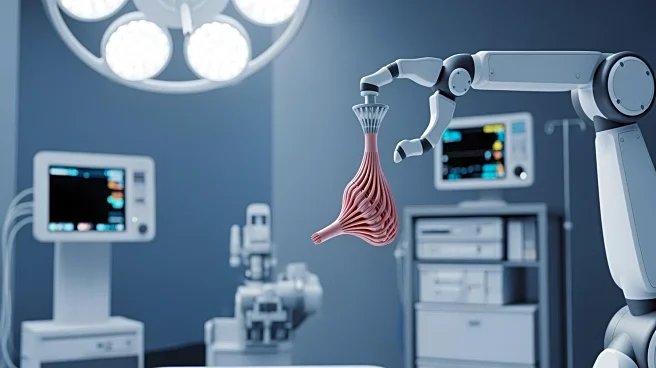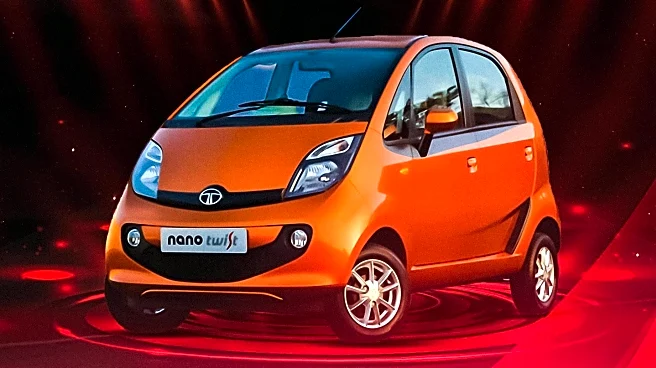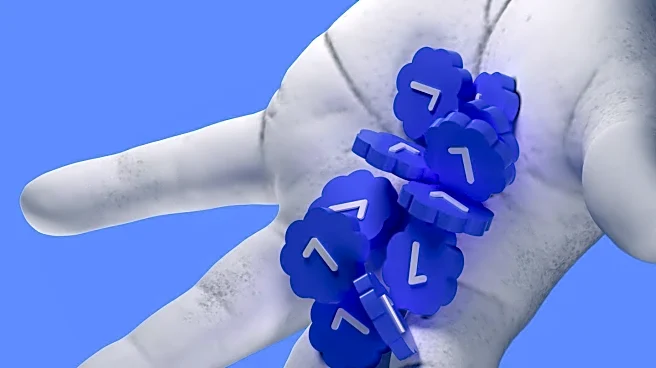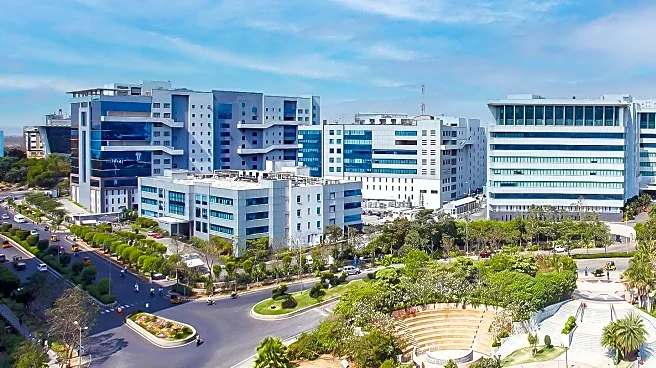What's Happening?
Corcym and CardioPrecision have collaborated to develop a minimally invasive robotic procedure for aortic valve replacement, known as advanced videoscopic aortic surgery by transcervical approach using
robot assistance (AVATAR). This procedure aims to combine the benefits of traditional surgery and transcatheter aortic valve replacement (TAVR) by allowing surgeons to remove diseased tissue before implanting a new valve. The technique involves delivering the valve through a small incision at the base of the neck, reducing pain, scarring, and recovery time compared to conventional surgery. The first successful procedure using this method was performed at the Cleveland Clinic with the Intuitive Surgical da Vinci robot, marking a significant milestone in robotic heart surgery.
Why It's Important?
The development of this robotic heart valve replacement procedure represents a significant advancement in cardiac surgery, offering patients a less invasive option with potentially better long-term outcomes. By enabling the removal of diseased tissue before valve implantation, the procedure may improve the durability and effectiveness of heart valve replacements. This innovation could lead to increased adoption of robotic surgery in cardiac procedures, potentially reducing recovery times and improving patient experiences. The collaboration between Corcym and CardioPrecision highlights the growing trend of integrating robotics into complex surgical procedures, which could drive further advancements in minimally invasive surgery.
What's Next?
As the procedure gains traction, it is likely that more hospitals will adopt this robotic approach, potentially leading to wider availability and acceptance of minimally invasive heart surgeries. The success of the initial procedures may encourage further research and development in robotic surgery technologies, potentially expanding their application to other complex surgical fields. Stakeholders, including healthcare providers and medical device companies, may invest in training and infrastructure to support the adoption of these advanced surgical techniques.
Beyond the Headlines
The integration of robotic technology in heart surgery raises ethical and legal considerations, particularly regarding the training and certification of surgeons to perform these complex procedures. Additionally, the cost implications of adopting robotic systems in hospitals could impact healthcare accessibility and affordability. Long-term, the success of robotic heart surgeries could shift the paradigm in cardiac care, emphasizing precision and minimally invasive techniques.











